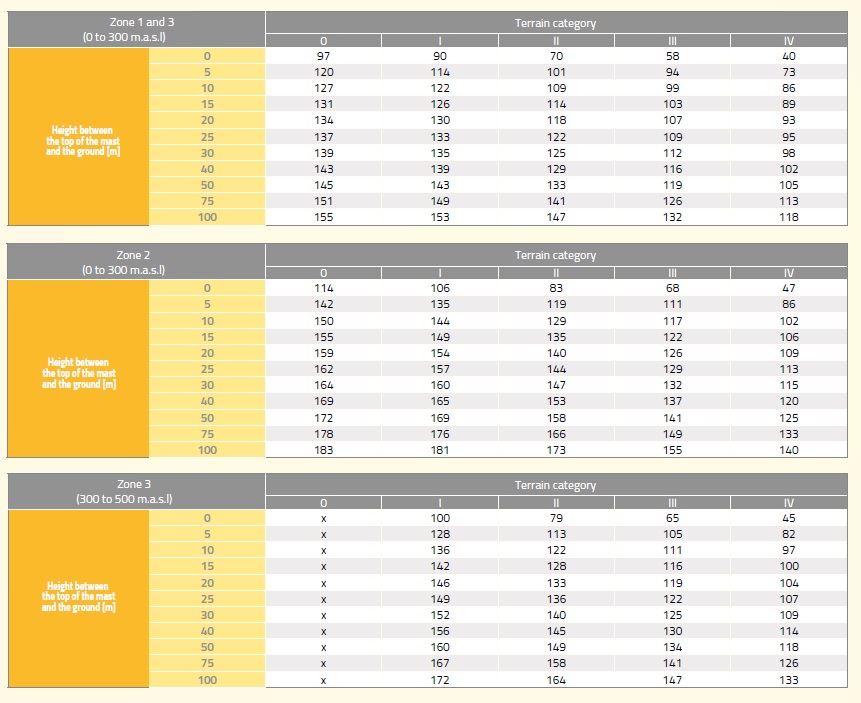Selection of interception air rods
For non-experienced person , selection of appropriate lightning protection masts for given object can be di_cult issue. Apart of choosing the right height and location of masts, we also need to determine their type and loading to ensure adequate wind resistance.
There are four steps to determine wind speed:
1. Determination of wind zone – Use the map below to determine the wind zone facility is located.

2. Determination of terrain category – the shape of terrain environment a_ects the wind speed. The more area around the object is _at and free from other building structures or trees, the value of wind speed may be higher. The terrain category is determined according to the following classi_cation.
TERRAIN CATEGORY 0 – Sea, sea shore opened for sea.

TERRAIN CATEGORY I- lakes or areas with a negligible small amount of vegetation plants with no other obstacles.

TERRAIN CATEGORY II – areas with low vegetation plants such as grass, and single obstacles (trees, buildings distant from each other not less than 20 times of their height.

TERRAIN CATEGORY III – areas regularly covered with vegetation plants either buildings or with single obstacles spaced apart on distanced not more than 20 times of their height (like villages, suburban areas, forests).

TERRAIN CATEGORY IV – areas where at least 15% is covered by medium-sized buildings exceeding 15 m hight.

3. Determination of height to the ground – it is the height between the top of the mast and the ground.

4. Determination of wind speed – after the wind zone, terrain category and height are determined we can read the maximum wind speed that can occur for our building object. Below is an example wind table for the Polish standard.
Check wind speed tables for standards in the country of investment.






